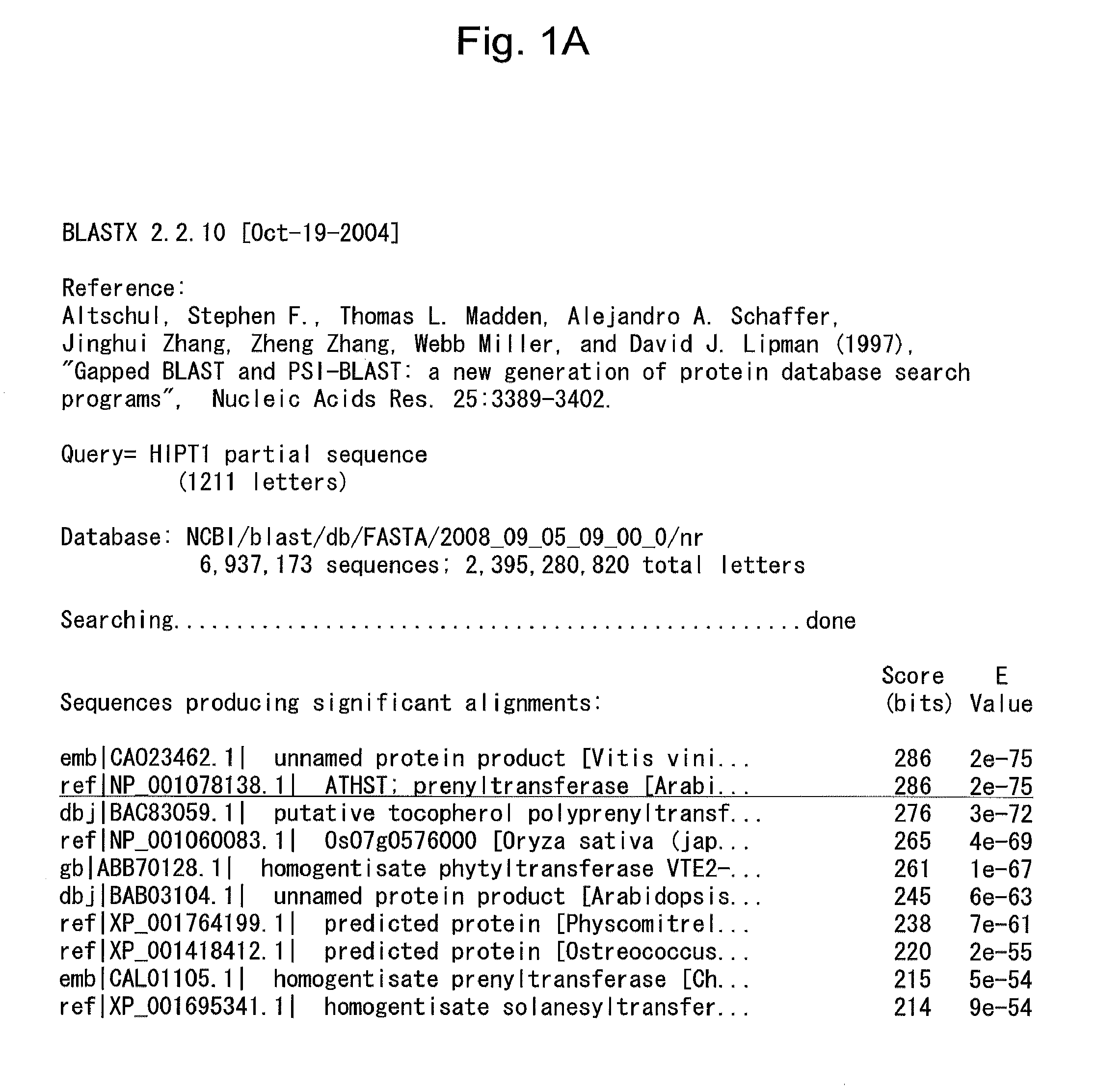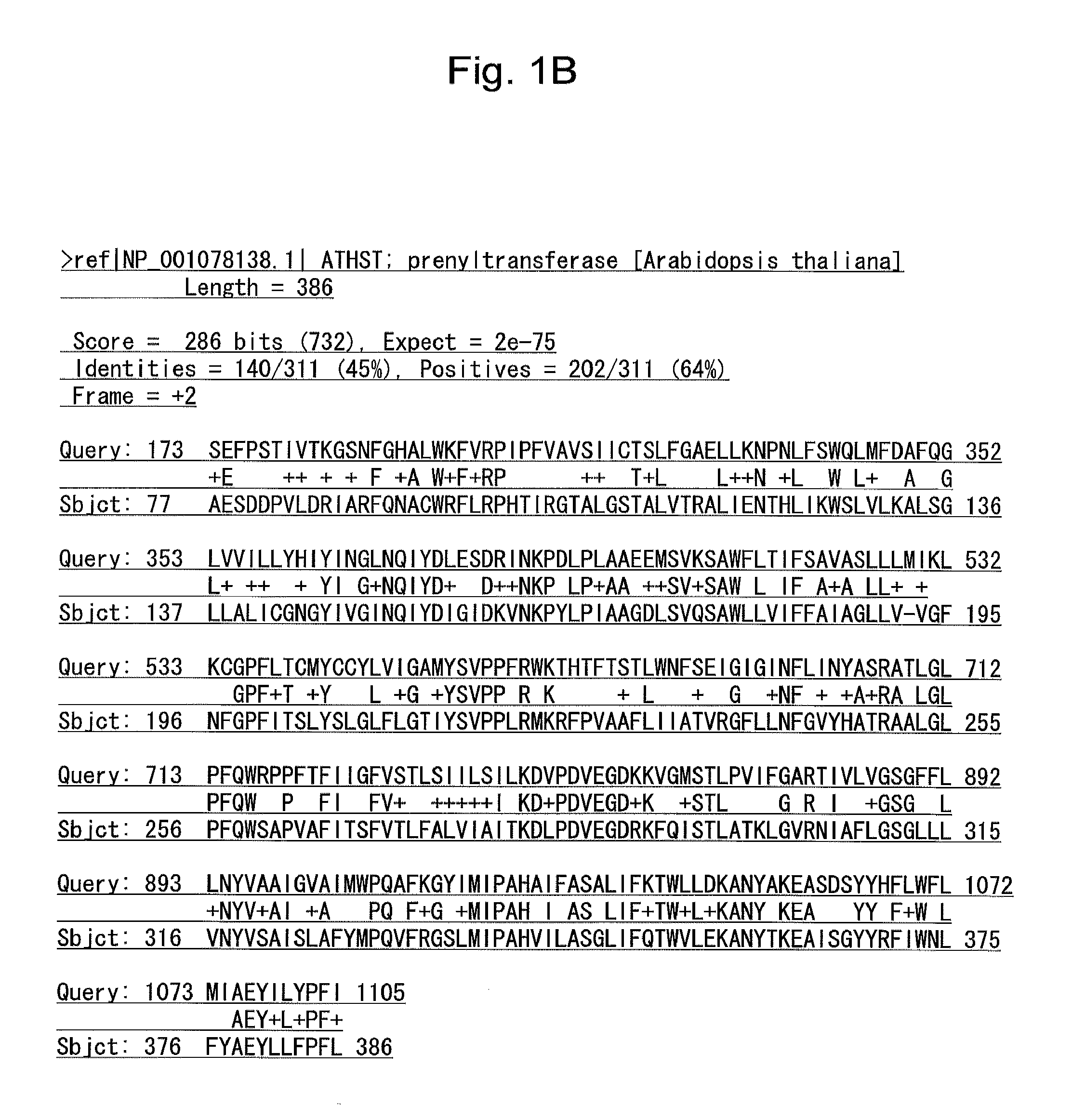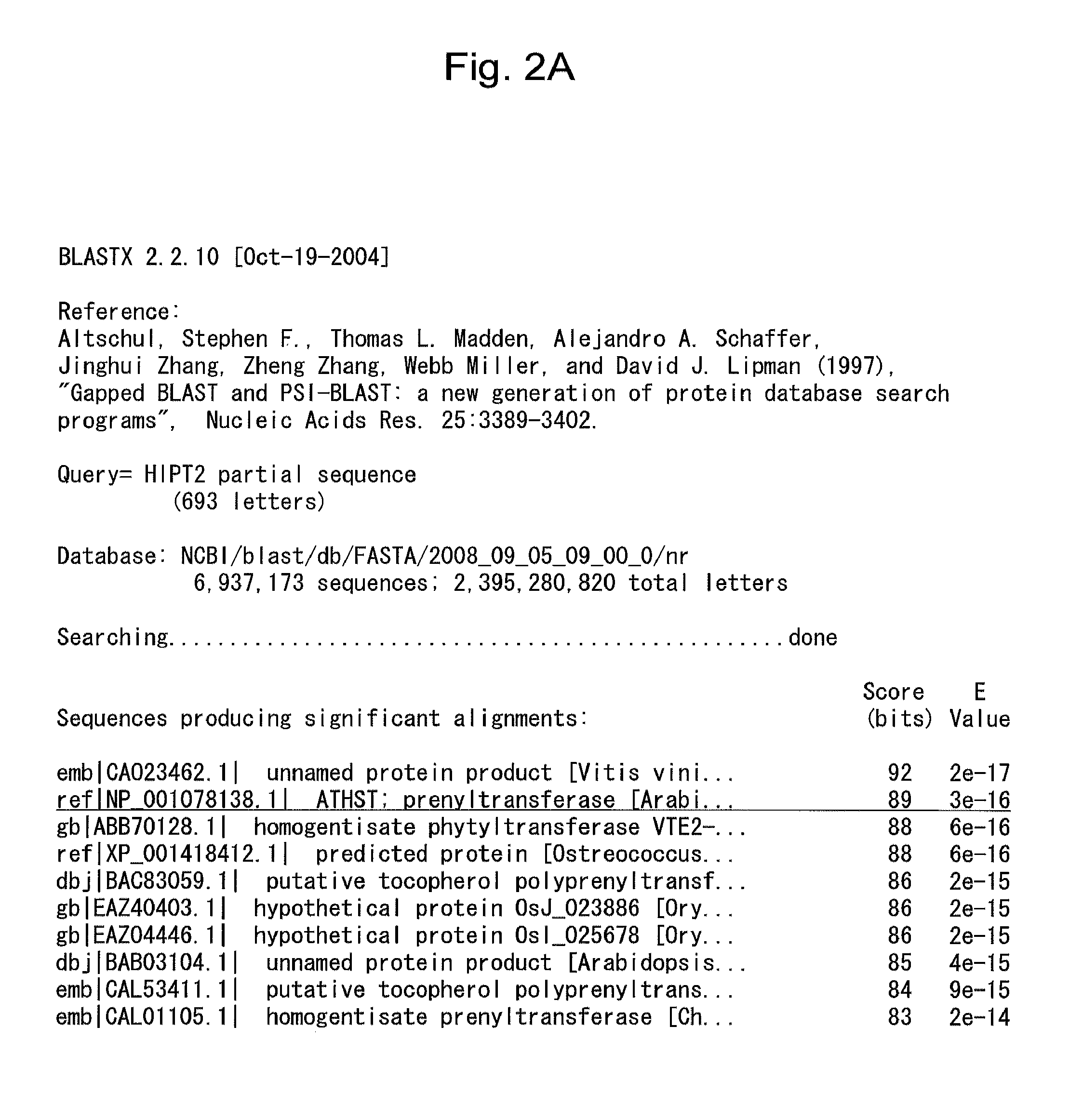Protein having novel prenyltransferase activity and gene encoding the same
- Summary
- Abstract
- Description
- Claims
- Application Information
AI Technical Summary
Benefits of technology
Problems solved by technology
Method used
Image
Examples
example 1
Construction of Hop Gene Expression Library and Nucleotide Sequencing
[0089]A region containing large quantities of lupulin glands was recovered from the cone of a hop (Humulus lupulus) variety (Kirin II) and grounded using liquid nitrogen. Total RNA was extracted by the cetyltrimethylammonium bromide (CTAB) method (Chang et al., 1993, Plant Mol Biol Rep. 11: 113-116). The obtained total RNA (620 μg) was given to Takara Bio Inc. for the purpose of construction of the cDNA library, analysis of 12,288 ESTs, and cluster analysis. Poly(A)+RNA was isolated using the oligotex-dT super mRNA purification kit (Takara Bio Inc.), and cDNA was prepared with the use of a reverse transcriptase. The cDNA plasmid library was constructed using a yeast expression vector (pDR196). The first strand cDNA was synthesized using an oligo(dT)18 anchor primer containing the XhoI restriction site. After the second strand cDNA was synthesized, a blunt-ended adaptor containing the EcoRI restriction site was liga...
example 2
Extraction of Candidate cDNA Clones
[0090]The aforementioned gene clusters were analyzed via nucleotide sequence homology search (BLASTX 2.2.10 (Altschul et al., Nucleic Acids Res. 25: 3389-3402, 1997)) using an amino acid sequence database (Database: NCBI / blast / db / FASTA / 2008—09—05—09—00—0 / nr., 6,937,173 sequences; 2,395,280,820 total letters). As a result, two gene clusters (i.e., H1PT1 and H1PT2) were found to be homologous to the plastoquinone synthase gene (Genbank Accession No. ABB701280). FIG. 1A and FIG. 1B each shows data regarding homology between H1PT1 and the plastoquinone synthase gene. FIG. 2A and FIG. 2B each shows data regarding homology between H1PT2 and the plastoquinone synthase gene. FIG. 1B is a continuation from FIG. 1A. FIG. 2B is a continuation from FIG. 2A. In FIGS. 1A, 1B, 2A, and 2B, underlined regions exhibit homology. While the sequences showed homology, such homology was partial and limited, and it was impossible to predict the enzyme activity. As is appa...
example 3
Evaluation of Activity of Enzyme Encoded by Candidate cDNAs
[0091]Cloned plasmids (pDR196-H1PT1 and pDR196-H1PT2) comprising each full-length sequence of the two gene clusters (H1PT1 and H1PT2) were introduced into the yeast strain (W303-1A-Δcoq2) by the lithium acetate method. Culture was conducted in 180 ml of SD-Ura liquid medium up to the logarithmic growth phase to express recombinant proteins in yeast transformants, and microsome fractions were prepared therefrom using the method of Yazaki et al. (JBC, 2002, 277, 6240-6246). The total amount of the reaction solution was adjusted to 200 μl by mixing 340 μg to 730 μg of proteins from the microsome fractions, flavonoid (1 mM), a prenyl group donor (1 mM), 20 mM MgCl2, and 100 mM Tris-HCl buffer (pH 7.5), and the reaction was allowed to proceed at 30° C. overnight. After the completion of the reaction, the product was extracted with ethyl acetate, dried, and dissolved in methanol (MeOH). The resultant was analyzed using Shimadzu LC...
PUM
| Property | Measurement | Unit |
|---|---|---|
| Fraction | aaaaa | aaaaa |
Abstract
Description
Claims
Application Information
 Login to View More
Login to View More - Generate Ideas
- Intellectual Property
- Life Sciences
- Materials
- Tech Scout
- Unparalleled Data Quality
- Higher Quality Content
- 60% Fewer Hallucinations
Browse by: Latest US Patents, China's latest patents, Technical Efficacy Thesaurus, Application Domain, Technology Topic, Popular Technical Reports.
© 2025 PatSnap. All rights reserved.Legal|Privacy policy|Modern Slavery Act Transparency Statement|Sitemap|About US| Contact US: help@patsnap.com



